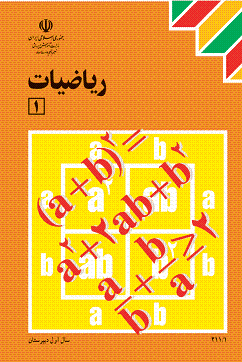The important properties of an engineering material determine the utility of the material which influences quantitatively the response of a given material to imposed stimuli and constraints. The various engineering material properties are given as under.
- Physical properties
- Chemical properties
- Thermal properties
- Electrical properties
- Magnetic properties
- Optical properties and
- Mechanical properties
These properties of material are discussed as under
1. Physical Properties:
The important physical properties of the metals are density, color, size and shape (dimensions), specific gravity, porosity, luster etc. Some of them are defined as under.
1.1 Density
Density is defined as mass per unit volume. In metric system its unit is kg/mm3. Because of very less density aluminium and magnesium metals are preferred in manufacturing of aeronautic and transportation applications.
1.2 Color
Color deals with the quality of light reflected from the surface of metal.
1.3 Shape and Size
Dimensions of any metal reflect the size and shape of the material. length, width, height, depth, curvature diameter etc. determines the size. Shape specifies the rectangular, circular, spherical, cuboidal or any other section.
1.4 Specific gravity
Specific gravity of any metal is the ratio of the mass of a given volume of the metal to the mass of the same volume of water at a specified temperature.
1.5 Porosity
A material is called as porous or permeable if it has pores within it.
2. Chemical Properties:
The study of chemical properties of engineering materials is necessary because most of the materials, when they come in contact with other substances with which they can react, suffer from chemical deterioration of the surface of the metal. Some of the chemical properties of the metals are corrosion resistance, chemical composition and acidity or alkalinity. Corrosion is the gradual deterioration of the material by chemical reaction with its environment.
3. Thermal Properties:
The study of thermal properties of materials is essential in order to know the response of metal to thermal changes i.e. lowering or raising of temperature. Different thermal properties are thermal conductivity, thermal expansion, specific heat, melting point, thermal diffusivity.
3.1 Melting point:
melting point is the temperature at which a pure metal or compound changes its state from solid to liquid. Melting point is called the temperature at which the liquid and solid are in equilibrium. It can also be said as the transition point between solid and liquid phases. melting temperature depends on the nature of inter-atomic and intermolecular bonds. Therefore higher melting point is exhibited by those materials possessing stronger bonds. Covalent, ionic. metalic and molecular types of solids have decreasing order of bonding strength and melting point. Melting point of mild steel is 1500°C, of copper is 1080°C and of aluminium is 650C
4. Electrical Properties:
The various electrical properties of materials are conductivity, temperature coefficient of resistance, dielectric strength, resistivity and thermoelectricity.
4.1 Conductiviy
Conductivity is defined as the ability of the material to pass electric current through it easily i.e. the material which is conductive will provide an easy path for the flow of electricity through it.
4.2 Temperature coefficient of resistance
temperature coefficient of resistance is generally termed as to specify the variation of resistivity with temeprature.
4.3 Dielectric strength
Dielectric strength means insulating capacity of material at high voltage. A material having high dielectric strength can withstand for longer time for high voltage across it before it conducts the current through it.
4.4 Resistivity
Resistivity is the property of material by which it resists the flow of electricity through it.
4.5 Thermoelectricity
If two dissimilar metals are joined and then this junction is heated, a small voltage (in the milli-volt range) is produced and this is known as thermoelectric effect. It is the base of the thermocouple. Thermo-couples are prepared using the properties of metals.
5. Magnetic Properties:
Magnetic properties of materials arise from the spin of the electrons and the orbital motion of electrons around the atomic nuclei. In certain atoms, the opposite spins neutralize one another, but when there is an excess of electrons spinning in one direction, magnetic field is produced. Many materials except ferromagnetic material which can form permanent magnet, exhibit magnetic affects only when subjected to an external electro-magnetic field. Magnetic properties of materials specify many aspects of the structure and behavior of the matter. Various magnetic properties of materials are magnetic hysteresis, coercive force and absolute permeability which are defined as under.
5.1 Magnetic hysteresis
Hysteresis is defined as the lagging of magnetization or induction flux density behind the magnetizing force or it is that quality of a magnetic substance due to energy is dissipated in it on reversal of its magnetism. Below Curie temperature, magnetic hysteresis is the rising temperature at which the given material ceases to be ferromagnetic, or the falling temperature at which it becomes magnetic. Almost all magnetic materials exhibit the phenomenon called hysteresis.
5.2 Coercive Force
Coercive force is defined as the magnetizing force which is essential to neutralize completely the magnetism in an electromagnet after the value of the magnetizing force become zero.
5.3 Absolute permeability
Absolute permeability is defined as the ratio of the flux density in a material to the magnetizing force producing that flux density. Paramagnetic materials posses permeability greater than one whereas di-magnetic materials have permeability less than one.
6. Optical Properties:
The main optical parameters f engineering materials are refractive index, absorptivity, absorption co-efficient, reflectivity or transmissivity. Refractive index is an important optical property of metal.
6.1 Refractive index
Refractive index is defined as the ratio of velocity of light in vacuum to the velocity of a material. It can also be termed as the ratio of sine of angle of incidence to the sine of refraction.
Mechanical Properties of Metals
Often materials are subject to an external force when they are used. Mechanical Engineers calculate those forces and material scientists how materials deform or break as a function of force, time, temperature, and other conditions. Materials scientists learn about these mechanical properties by testing materials.
Some of the important mechanical properties of the metals are Brittleness, Creep, Ductility, Elasticity, Fatigue, Hardness, Malleability, Plasticity, Resilience, Stiffness, Toughness, Yield strength. Above mechanical properties of metals are explained below in brief.
Brittleness:
The tendency of material to fracture or fail upon the application of a relatively small amount of force, impact or shock.
Creep:
When a metal is subjected to a constant force at a high temperature below its yield point, for a prolonged period of time, it undergoes a permanent deformation.
Ductility:
Ductility is the property by which a metal can be drawn into thin wires. It is determined by percentage elongation and percentage reduction in the area of metal.
Elasticity:
Elasticity is the tendency of solid materials to return to their original shape after being deformed.
Fatigue:
Fatigue is the of material weakening or breakdown of equipment subjected to stress, especially a repeated series of stresses.
Hardness:
Hardness is the ability of material to resist permanent change of shape caused by an external force.
Malleability:
Malleability is the property by which a metal can be rolled into thin sheets.
Plasticity:
Plasticity is the property by which a metal retains its deformation permanently, when the external force applied on it is released.
Resilience:
Resilience is the ability of metal to absorb energy and resist soft and impact load.
Stiffness:
When an external force is applied on metal, it develops an internal resistance. The internal resistance developed per unit area is called stress. Stiffness is the ability of metal to resist deformation under stress.
Toughness:
When a huge external force is applied on metal, the metal will experience a fracture. Toughness is the ability of metal to resist fracture.
Yield strength:
The ability of metal to bear gradual progressive force without permanent deformation.
 آمار
وب سایت:
آمار
وب سایت:





.JPG)






